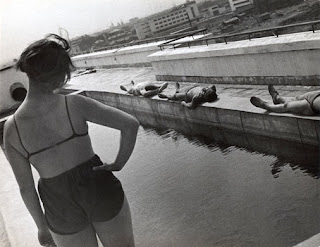Annie Leibovitz is an American portrait photographer, often contributing to high fashion magazines. Always a creative, she became interested in art at a young age, dabbling in many different mediums, and developed her photography interests and skills alongside this.
Like many photographers, she began her career as a staff photographer, working for the Rolling Stone magazine, and just three years later, in 1973, becoming chief photographer- a job she would go on to hold for ten strong years, creating a style for the magazine, an identity, inspired by photographers such as Avedon, Frank and Cartier-Bresson, and was notably the bery last person to professionally photograph John Lennon (alongside Yoko Ono for a Rolling Stone cover)- whom was sadly shot and died just five hours after the photoshoot.
One of my all-time favourite shoots by Leibovitz include the images I have showcased in this blog, featured in Vogue magazine, in which Russian model Natalia Vodianova models as Alice from Lewis Carroll's 'Alice's Adventures In Wonderland', in a surrealist and high-fashion style, surrounded by "characters" from the story- "characters" of the fashion world- Donatella Versace, Galliano, Jean Paul Gaultier, Tom Ford...the list goes on.
The line up is "to die for" for any lover of fashion and photography.
Like so many photographers, almost unfortunately, Annie Lebovitz, as a photographer, is relatively unknown to me, but her images are among some of my favourites (sad in terms of the lack of recognition, perhaps?), her range of versatility and playful charm really captures my imagination, and never fails to bring a smile to my face.
A favourite, for sure.



















































